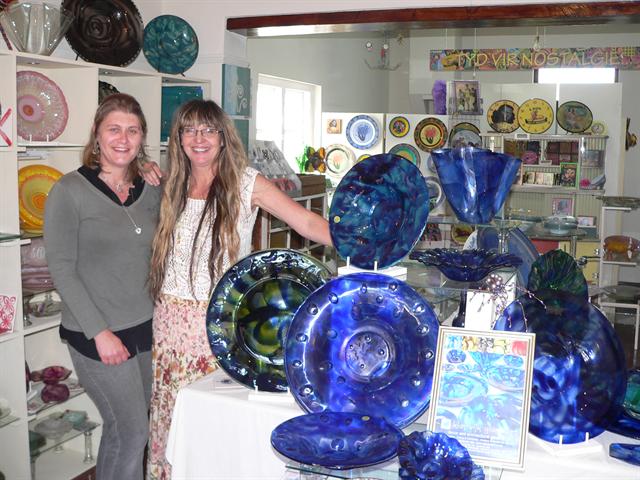It is here where they turn used and unwanted pieces of glass into objects of beauty - and functionality, mainly using a technique called glass fusing and slumping.
Bowls, plates, trays, tiles, door panels, decorative items, and any glass product you can think of, are being hand-crafted in their studio in Kloof Street. They pride themselves in using recycled glass, often visiting the dumpsters of local industries to find the perfect material.
Klapwijk Glass is the legacy of the late Wim Klapwijk, a well-known Mossel Bay resident who built the Romanza boat, but who was also known for his profound love of glass art.
"His fascination with glass started about 20 years ago," explains Zandra, his daughter with whom he shared this passion.
"He ordered an oven from Holland and together, we attended courses and learnt the art of glass fusing. He built a state-of-the-art studio in this house."
Zandra says her father was asked to make the windows of one of the town's churches. His proudest moment was probably when they were invited to exhibit their work at Decorex in Johannesburg.
"Sadly, he passed away four years ago. But it was always his dream that his daughter would take over the business, continuing working in the studio which he built."
It took her two years of hard work and preparation to get where she is today: at the verge of opening this beautiful exhibition to the public.
"I am sure Wim is smiling," she says.
Klapwijk Glass will be having an 'open house trading' from 25 to 29 September and throughout October, so the general public can share in the magic of what she and Tracy-Lee have created. The house, next door to the German deli on Kloof Street, will be open from 09:00 to 16:00 during these days.
How it's done:
There is a whole process that Zandra and Tracy-Lee follow when making a glass item.
First, they visit the dumpsters of local industries. Wearing gloves, they sift through the garbage to find glass big enough for what they have in mind. Often, the glass is dirty and has to be thoroughly cleaned when they arrive back at the studio.
Then, a sorting and sizing process begins. Sometimes the glass is scratched or has marks on it and can't be used. After the glass is cut to size, they file it. The saw dust then has to be thoroughly removed. Then, the mould is prepared.
They line it with kiln to prevent the glass from sticking to the mould. Then the item is painted, using either pigments or oxides. It goes into an oven, where it is heated at 800° for 24 hours. It then has to go though a gradual cooling-down process.
After that, the item is scrubbed with a brush to get rid of the kiln powder. Sometimes it has to be filed again to get rid of sharp ends. And sometimes - luckily not often - something goes wrong and the item comes out a flop or breaks, which is devastating after all this hard work!
*If you would like to see their work or want to know more about the open house trading, call Zandra at 082 716 9125.

Tracy-Lee Belter and Zandra Klapwijk show off their work and that of Zandra's late father, Wim, who had a preference for blue.
ARTICLE: MARI SCOTT, MOSSEL BAY ADVERTISER JOURNALIST















